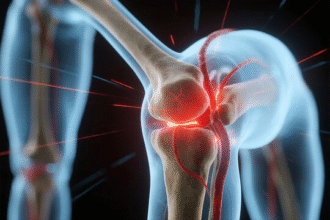Oral Candidiasis (Thrush)
Oral candidiasis is a superficial fungal infection of the oral mucosa caused predominantly by Candida albicans. Candida can colonize healthy mouths; disease occurs when local or systemic factors disrupt host defenses and allow overgrowth.
Key points
- Most cases are mild and respond to topical antifungals within 7–14 days.
- Recurrent or severe disease warrants evaluation for underlying risks (diabetes, HIV, xerostomia, recent antibiotics, inhaled or systemic steroids, chemotherapy, organ transplant, malnutrition).
- Topical and systemic glucocorticoids are contraindicated during active infection unless needed for another condition; they can worsen thrush.
- Odynophagia or retrosternal pain suggests esophageal involvement—start systemic therapy and consider endoscopy.
Clinical types and features
1) Pseudomembranous candidiasis (acute or chronic; “thrush”)
– Creamy white, curd‑like plaques anywhere in the mouth; underlying mucosa is erythematous and may bleed when plaques are wiped.
– Common in infants, older adults, inhaled steroid users, and immunocompromised individuals (e.g., HIV).
2) Erythematous (atrophic) candidiasis
– Diffuse red, painful mucosa; burning sensation and taste change. Often prominent on the dorsum of the tongue with papillary atrophy.
– Frequently follows antibiotics or corticosteroids. Angular cheilitis may co‑occur.
3) Denture‑associated stomatitis (chronic erythematous)
– Bright red, edematous mucosa beneath a removable denture (palate, maxillary ridge). May show yellow‑white patches.
– Risk increased by continuous wear, poor denture hygiene, and ill‑fitting appliances.
4) Chronic hyperplastic candidiasis (candidal leukoplakia)
– Firm white plaques on buccal mucosa, palate, or tongue that do not wipe off; nodular or granular surface.
– Long‑standing lesions carry a small malignant transformation risk—biopsy and specialist follow‑up recommended.
Risk factors and triggers
- Recent broad‑spectrum antibiotics
- Inhaled or systemic corticosteroids; immunosuppressants; chemotherapy
- Uncontrolled diabetes, HIV/AIDS, hematologic malignancy
- Xerostomia (Sjogren’s, medications), malnutrition, iron/B12/folate deficiency
- Poorly cleaned dentures or continuous wear
- Infancy, older age, pregnancy
Diagnosis
- Clinical recognition is often sufficient for typical cases.
- Bedside microscopy: KOH preparation shows budding yeast and pseudohyphae.
- Culture is optional for refractory/recurrent disease or atypical presentations.
- If recurrent or severe, screen for underlying contributors (glucose/HbA1c, HIV testing where indicated, medication review, salivary flow, nutritional deficiencies).
- Esophageal symptoms (odynophagia, chest pain) suggest extension—treat systemically; consider endoscopy if not improving.
Differential diagnosis
- Oral leukoplakia, oral hairy leukoplakia (EBV)
- Lichen planus, geographic tongue, frictional keratosis
- Aphthous ulcers, HSV stomatitis
- Nutritional glossitis, contact mucositis
Treatment
General measures (all patients)
– Address predisposing factors: optimize glycemic control; minimize/space antibiotics; rinse mouth after inhaled steroids and use a spacer; improve denture hygiene and fit.
– Excellent oral hygiene; limit high‑sugar foods; stop smoking.
– Avoid topical/systemic corticosteroids to the mouth during active infection unless clinically essential for another condition.
First‑line topical therapy (mild to moderate, immunocompetent)
– Nystatin suspension 100,000 units/mL: adults 4–6 mL swish and retain then swallow, four times daily for 7–14 days; infants 1 mL to each side of mouth QID for 7–14 days. Avoid feeding for 10–15 min after dosing.
– Clotrimazole troches 10 mg: dissolve slowly in mouth, five times daily for 7–14 days. Not ideal with severe xerostomia or in young children (choking risk).
– Miconazole mucoadhesive buccal tablet 50 mg once daily for 7–14 days (where available). Note drug interactions (e.g., warfarin).
Systemic therapy (moderate–severe, refractory, or high‑risk patients; esophageal symptoms)
– Fluconazole: 200 mg on day 1, then 100 mg orally once daily for 7–14 days (extend to 14–21 days for esophageal disease). Check for CYP interactions and hepatic disease.
– If fluconazole‑refractory or intolerance: itraconazole oral solution 200 mg daily (or 100 mg twice daily) for 14 days; alternatives include posaconazole per labeling and specialist input.
Denture‑associated stomatitis adjuncts
– Remove dentures at night; clean daily with brushing and non‑abrasive cleaner.
– Soak acrylic dentures nightly in 0.12% chlorhexidine or a dilute hypochlorite solution (e.g., 1:10 household bleach) for 10 minutes, then rinse thoroughly; avoid bleach on metal components.
– Apply topical azole to mucosa and denture‑contact surfaces.
Angular cheilitis management
– Topical azole cream to commissures 2–3 times daily for 1–2 weeks; add barrier ointment (e.g., petrolatum).
– If impetiginization suspected, consider short course of topical antibacterial (e.g., mupirocin) per local guidance.
Special populations
– Infants and breastfeeding: Treat infant with nystatin as above; treat maternal nipples with topical clotrimazole/miconazole after feeds; boil or sterilize pacifiers and bottle nipples; wash breast pads and linens hot.
– Pregnancy: Prefer topical azoles; avoid oral fluconazole, especially in the first trimester—seek obstetric guidance for severe disease.
– HIV or profoundly immunosuppressed: Systemic therapy is often required; longer courses and secondary prophylaxis may be considered per guidelines; evaluate for esophageal involvement if symptoms.
Follow‑up and prevention
- Reassess in 1–2 weeks; extend or escalate therapy if symptoms or signs persist.
- Rinse after inhaled corticosteroids; use spacer devices.
- Nightly denture removal and routine disinfection; ensure proper fit.
- Manage xerostomia (saliva substitutes, medication review).
When to refer
- Refractory or recurrent disease despite appropriate therapy
- Suspected chronic hyperplastic candidiasis (non‑wipable plaques) for biopsy
- Severe immunosuppression, systemic toxicity, or suspected esophageal candidiasis
Patient education
- Thrush is common and usually responds quickly to treatment.
- Take antifungals as prescribed for the full course, even if symptoms improve early.
- Reduce recurrence by addressing triggers (dentures, inhaled steroids, dry mouth, high sugar intake).







